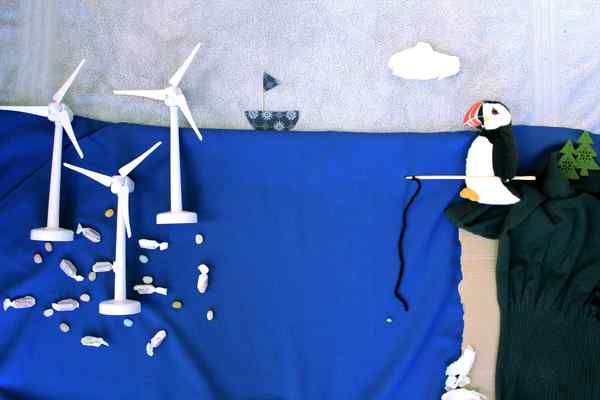Images of climate innovation
Windfarms and Wildlife: Sustainable Coexistence
Whilst wind farms can provide protective havens for fish, they can prevent seabirds from reaching crucial food supplies. In collaboration with the Joint Nature Conservation Committee, we are studying the impact of offshore wind farms on the environment and wildlife. Through increased understanding of bird movements around wind farms, new wind farm developments can be designed such that wildlife is protected and sustainable energy needs can be met.

Offshore wind farm development is growing rapidly and needs to continue so that we can meet climate goals. Our knowledge of interactions between the environment and artificial structures needs to keep up so that we can learn from past examples and make improvements. Wind farms can provide protective havens for fish, but they can prevent seabirds from reaching crucial food supplies.
There is more than one wind farm in the sea, so we are trying to understand how multiple developments change the whole ecosystem. In collaboration with the Joint Nature Conservation Committee, we are studying how much food and habitat is lost by offshore renewable energy, and how that affects seabird populations. If we can better understand seabird interactions with marine renewable energy, then monitoring, mitigation, and conservation efforts can be targeted and more efficiently implemented.
The consenting and building of offshore renewable energies can also benefit as uncertainties surrounding impacts to seabirds are reduced. In the long run, this will help inform the best locations to build future wind farms and mitigate any negative impacts.
This research is therefore valuable for a range of stakeholders, from seabed owners, through developers and regulators, to nature conservation bodies. Gaining an understanding of the impact of multiple wind farm developments on seabirds is further beneficial across borders, particularly in the North Sea where wind farms are developed by many European countries but are in close proximity to one another.
We need cross-country collaboration to help the seabirds which live across the vast sea which we rely so heavily on to meet our climate goals. With this increased understanding of seabirds and wind farms, new developments can be designed such that wildlife is protected and sustainable energy needs can be met. In a time of climate and biodiversity crisis, it is crucial that renewable energy and wildlife can coexistence sustainably.
Entrant: Rebecca Hall , University of Strathclyde
Copyright: Rebecca Hall